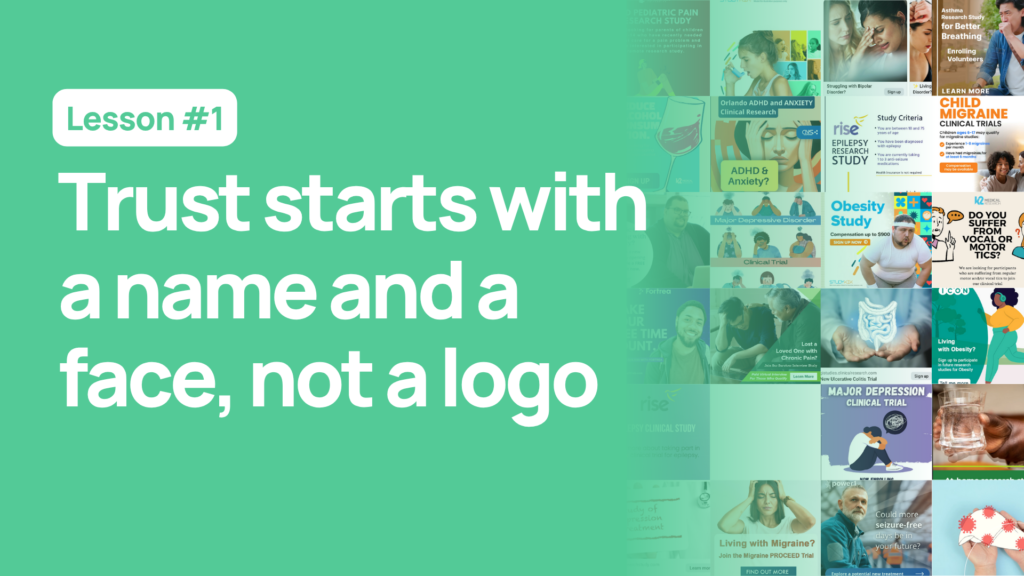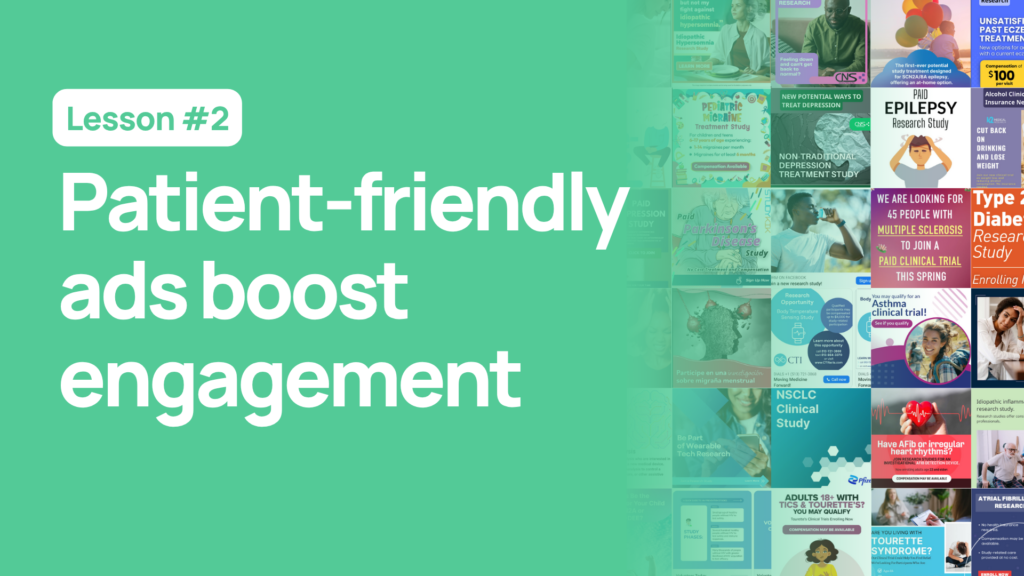Patient-friendly ads boost engagement.
This is just one lesson we learned!
Download the full eBook to explore all the insights we gained from analyzing 100 live patient recruitment ads.
The advantage of patient-friends recruitment
Reaching patients is no longer the hardest part of recruitment, earning their attention is. Every day, people scroll past thousands of digital messages, most of which blend into the noise. In clinical trial recruitment, even a slight misstep in tone or clarity can mean a missed opportunity.
Patient-friendly advertising changes that dynamic. When ads speak in plain language, address real questions, and convey genuine empathy, they invite trust instead of resistance. The result is more than higher engagement metrics, it’s a stronger bridge between patients and the research that needs them.

The importance of standing out in today's digital world
In a world where attention spans are measured in seconds, connection has to happen fast. Facebook reported that users typically spend just 1.7 seconds on mobile and 2.5 seconds on desktop viewing content before scrolling past. In that tiny window, flashy visuals or corporate polish rarely make an impact.
What cuts through the noise isn’t fireworks, it’s sincerity. Patients pause for messages that feel real, empathetic, and relevant to their lives.
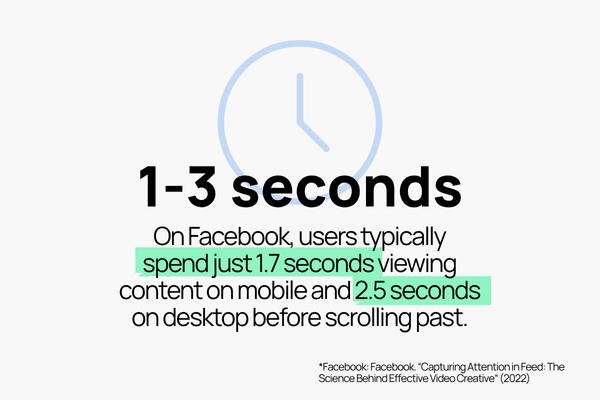
Relatable creative choices, like soft illustrations or gentle animations, consistently outperform ads that rely on high-gloss imagery or technical jargon. In one case, a calm, human-centered visual paired with a simple message such as “You Matter to Research” earned far higher engagement than a sleek corporate design.
When an ad looks and sounds like it’s meant for a person, not a demographic, patients are more likely to stop, read, and respond.
With so much competition for attention, the goal isn’t just to be seen but to be remembered. Ads that communicate warmth, clarity, and authenticity create moments of trust in a space built for speed. The most successful recruitment campaigns aren’t those that shout the loudest but those that make someone pause and think this feels real and personal to them.
Common themes in patient recruitment visuals
Patients are quick to click away when a brand or sponsor feels anonymous or “salesy.” Leading with clear identification and a human face (such as a study doctor or real patient testimonial) goes much further than you think. Some high-performing campaigns even included short video greetings from a study nurse, humanizing the whole process.
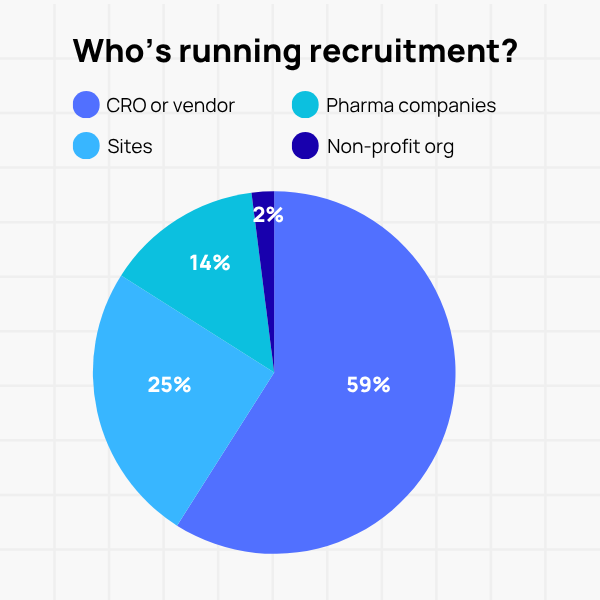
Why this matters for patient recruitment
In our analysis of patient recruitment ads, 54% used stock photography, 24% relied on illustrations, 13% featured text only, 7% incorporated AI-generated imagery, and 2% used graphics and text-based design alone. This breakdown reveals a clear pattern: most clinical recruitment messaging still looks and feels generic.
Stock photos dominate because they are easy, accessible, and familiar but they also risk blending into the digital noise. For patients, repetitive, polished imagery can signal distance rather than trust. When an ad feels interchangeable with dozens of others, it struggles to stand out or feel genuine.
This matters because the image is often the first and only moment of connection. Patients decide within seconds whether to engage, and visual authenticity heavily influences that decision. Illustrations and thoughtfully designed creative elements tend to outperform stock or AI-generated imagery because they convey warmth, care, and intent.
How this looks with real-world patient recruitment ads

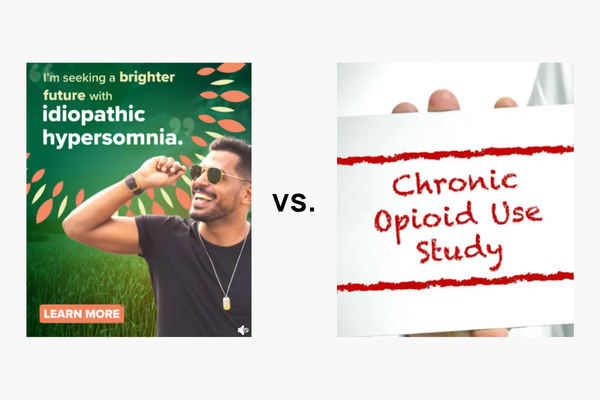
Warmth drives connection. Ads that speak directly to people and use language like “you” and “your health” create a sense of conversation rather than promotion. Messaging grounded in empathy, such as “your voice matters in shaping medicine,” consistently inspired engagement because it made individuals feel recognized and valued.
In contrast, formal or clinical phrasing like “We are looking for…” or “Eligible participants must…” often created emotional distance. Patients don’t respond to criteria—they respond to being understood.
Visually engaging and relatable recruitment ads strengthen this connection even further. Warm tones, approachable imagery, and compassionate language help patients feel seen, respected, and invited to participate in something meaningful. When an ad feels genuinely human, it breaks through digital noise and builds trust in seconds. The most effective creative doesn’t just attract attention, it earns it by making every viewer feel that the message was written for them.


